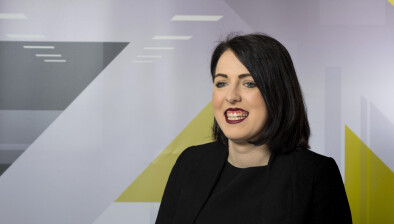Dawn Reoch: Business debt in the aftermath of the pandemic

Dawn Reoch
Dawn Reoch discusses business debt in the aftermath of the coronavirus pandemic.
The Before
In the first week of March, the COVID-19 liquidity panic hit.
Phones starting ringing in banking departments of law firms across the UK.
Borrowers wanted to know if they could draw their (in some cases significant) revolving credit facilities in full; lenders wanted to know if the Material Adverse Effect clause gave lenders the power to stop them.
Suddenly it began to feel like 2008 all over again.
The During
Since then, unprecedented government and lender support have helped calm the panic.
To date, £38 billion of loans have been made available through the government-backed Bounce Back Loan scheme, the Coronavirus Business Interruption Loan Scheme (CBILS) and the Coronavirus Large Business Interruption Loan Scheme (CLBILS).
The schemes are not perfect. EU state aid rules prohibit government-backed support to a “business in difficulty”. This extends to companies who have accumulated losses of greater than half of their subscribed share capital as at 31 December 2019. This captures a large portion of private equity (PE) backed companies in the UK due to their equity and shareholder debt structures.
To explain, PE sponsors typically invest in shares and shareholder loan notes, with the majority of the investment being by way of shareholder loan notes. The loan notes accrue interest, often at a rate of between eight per cent and 12 per cent per annum.
The interest is “paid” through the issue of further loan notes. This payment in kind counts as payment of the interest and is deducted from the profits of the underlying business, even
although there is no cash payment.
As a result, in many cases the accumulated losses are too high for the business to qualify for CBILS or CLBILS, even where pre-Covid 19, cash flows and cash flow projections were strong.
The ineligibility of many PE backed businesses for CBILS and CLBILS has caused frustration for borrowers and lenders alike. However, even where government funding is not available, lenders remain supportive of strong businesses.
We have seen a number of lenders make additional working capital available to clients who do not qualify for the schemes. In other instances, lenders are agreeing payment and covenant holidays through to the end of the year to help support businesses.
The After
There is a concern that while liquidity measures being put in place now are providing a temporary reprieve, a large portion of UK SME debt is not sustainable longer term.
Industry body, TheCityUK, estimates that by March next year, there could be £100bn of unsustainable loans in place. A recent survey of UK small businesses found 43 per cent of those who have taken out government-backed loans did not expect to repay. At the encouragement of the Bank of England, they have brought together a number of key industry players to consider the recapitalisation challenge they predict lies ahead.
The interim report looks at unlocking PE and private debt, institutional and retail investor capital, but flags risk-return dynamics, operational and regulatory issues need overcome before this capital can be accessed.
It suggests some innovative twists to traditional instruments to recapitalise unsustainable debt focusing on:
- preferred shares - subordinate to all existing debt, but ranking ahead of shareholder loans (currently preference shares rank behind all debt, including shareholder loans) and with annual means tested dividends;
- a contingent tax liability – a means tested obligation with borrowers paying a percentage of taxable profits to HMRC until the liability is paid off;
- profit participating debt with a ratcheting interest rate that reduces in times of reduced profitability; and
- forbearance schemes including the extension of term loans, moratoriums and capital holidays with a view to the debt eventually returning to a “performing” loan.
While the thought leadership being provided by TheCityUK is very welcome, and undoubtedly an important step towards key stakeholders working together to help support UK SMEs, the initiatives will inevitably take time to implement.
Nearly all of these proposed solutions will require legislative changes.
In the meantime, borrowers and PE sponsors will want to consider the long term sustainability of their debt packages. Early engagement with lenders and other stakeholders combined with an emphasis on good quality financial reporting and analysis are key to a positive outcome.
Potential restructuring options and issues borrowers and PE sponsors should be alert to include:
- Debt for equity swaps – traditional banks are unlikely to opt for this, but debt funds may be open to converting debt to shares or warrants. If lenders convert, they will expect to rank ahead of shareholder debt and so PE sponsors may have to consider converting loan note debt;
- Layering of debt – where incumbent banks cannot provide additional working capital, other debt providers may be prepared to provide mezzanine or super-senior solutions. Profit participating debt (referred to in TheCityUK report) is an interesting option for both lenders and PE sponsors to consider in this context. Care would be needed to ensure instruments are not characterised as equity with payments being subject to rules on distributions;
- Types of finance – consideration should be given to asset based finance, receivables finance and supplier chain finance options, particularly where traditional revolving credit and overdraft facilities are not available. Many lenders have in-house teams dedicated to these types of lending;
- Debt sales – special situation funds may be looking to acquire under performing loans. Corporates and PE sponsors should be alive to the transferability provisions in their documents and seek clear and open communication with their lenders in the context of any potential transfer.
These are just a few practical issues to consider in the context of preparing for any debt restructure. Positive steps, will require buy-in from a number of stakeholders and so planning now, could save valuable time further down the line.
COVID-19 presented a huge liquidity challenge for UK borrowers, but with the support of government-backed schemes, we’ve seen unprecedented support from lenders.
There is potentially an even more significant challenge ahead, but the work being led by TheCityUK is a positive move by the industry to address this head on.
In the meantime, borrowers should look to put themselves in the best position possible through good quality financial reporting, establishing clear lines of communication with their lenders and engaging stakeholders at all levels as early as possible.

Dawn Reoch is a partner at Burness Paull LLP







